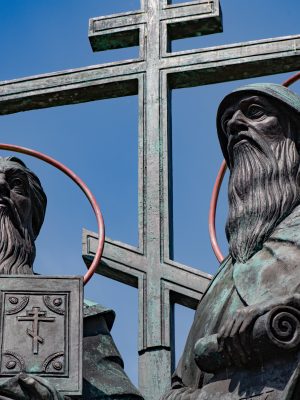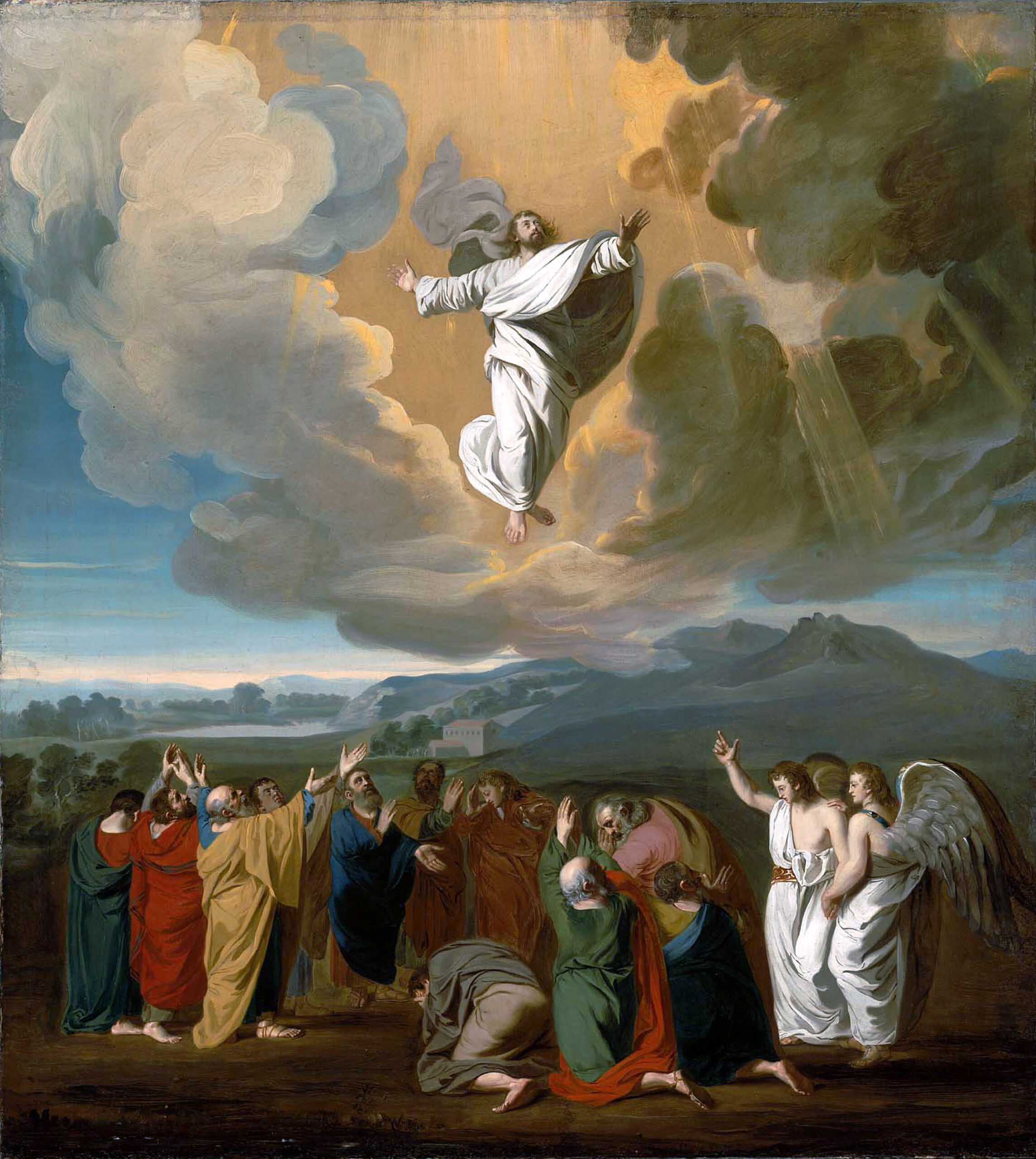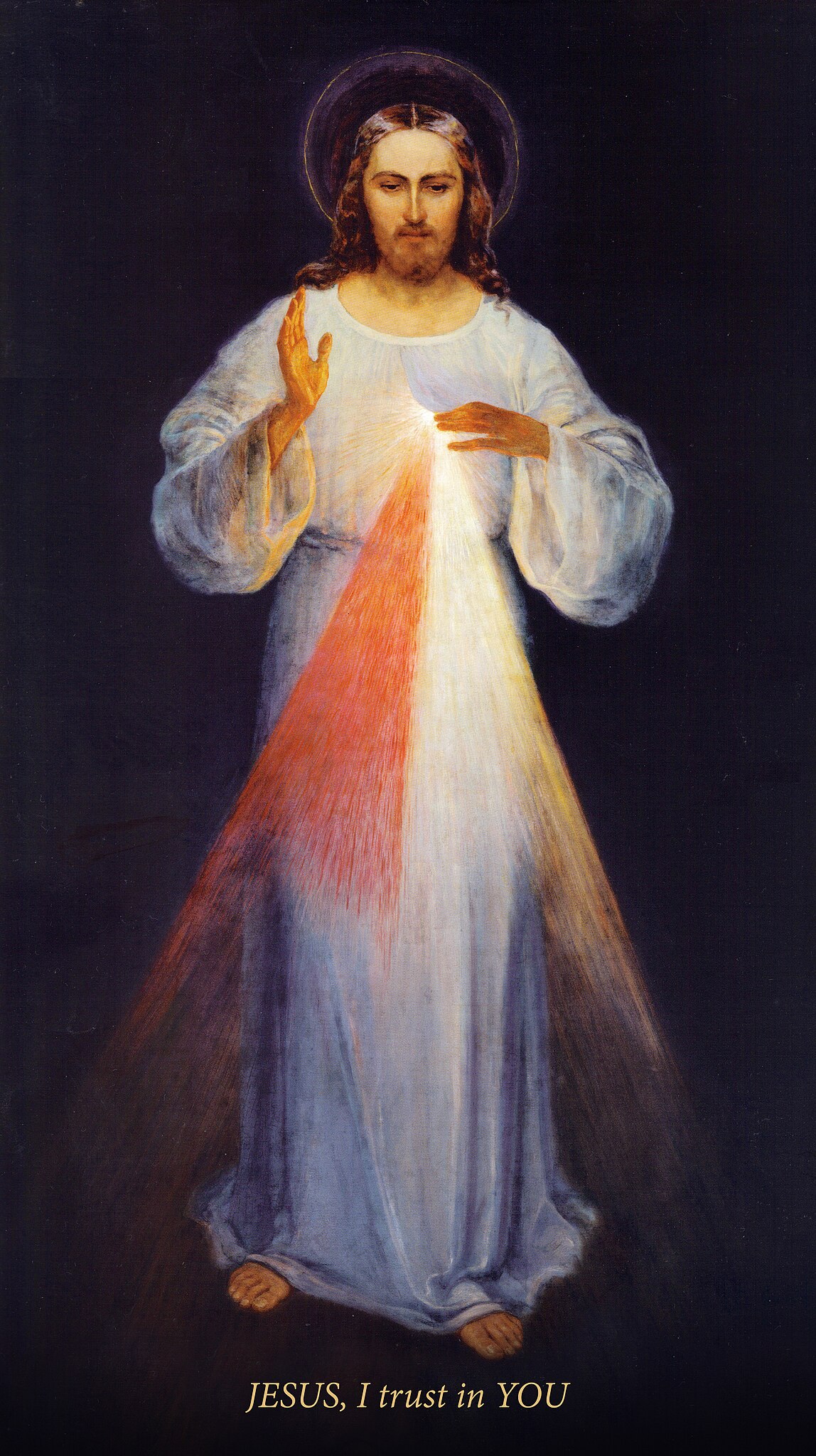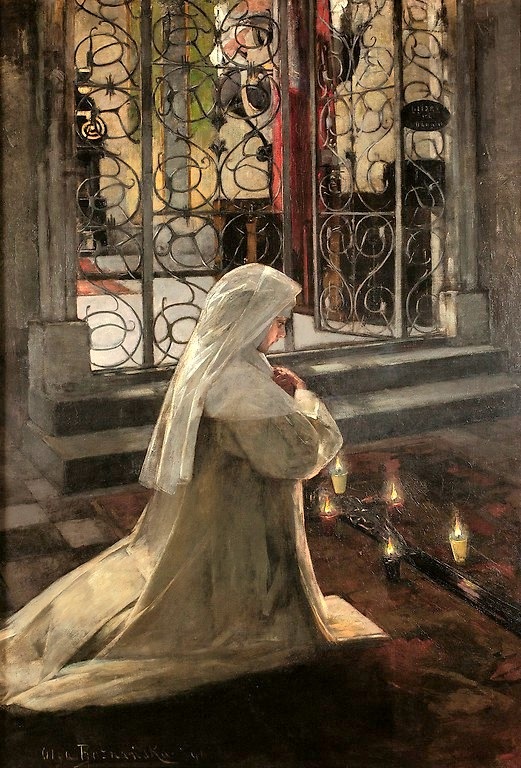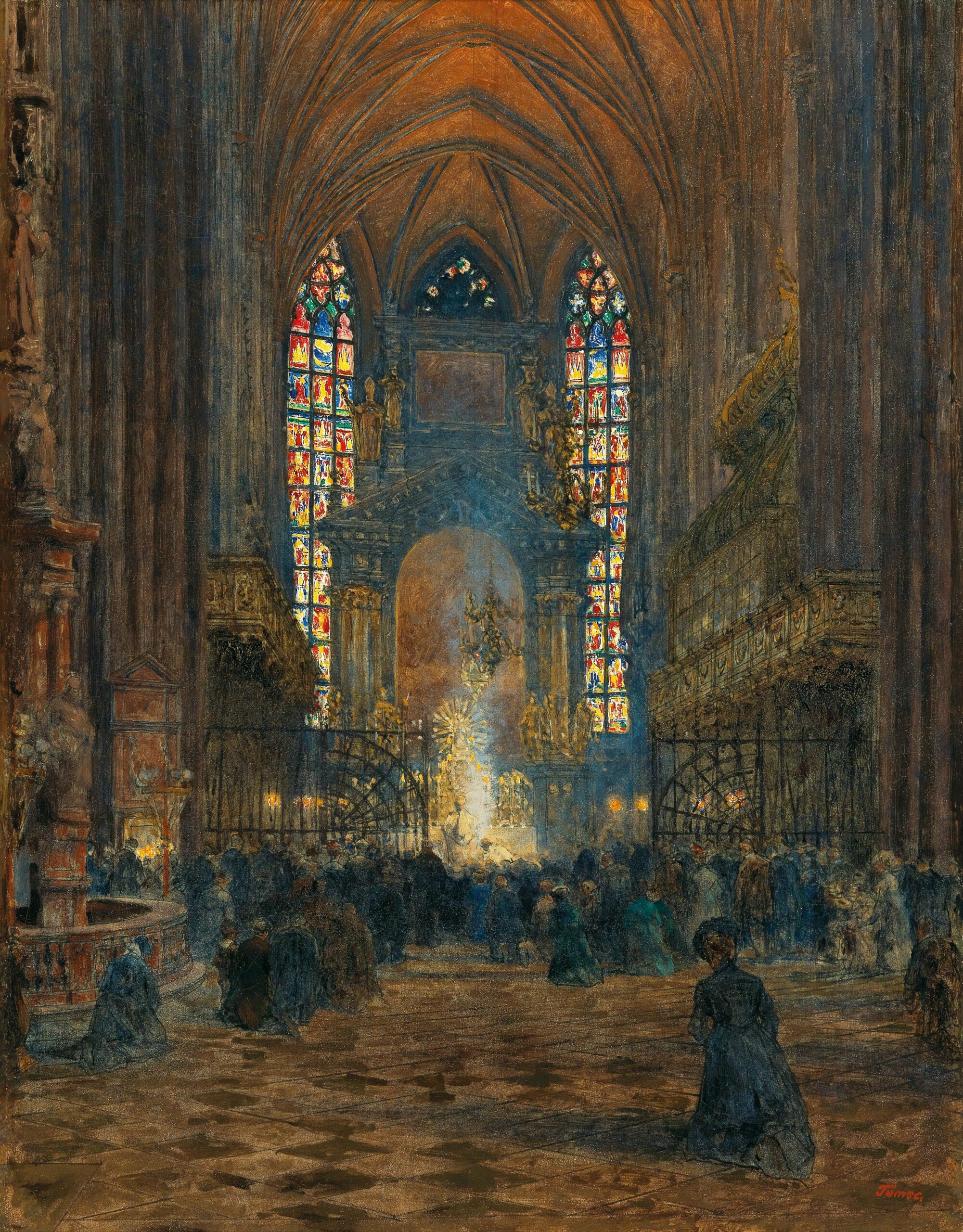In June 2014, my family experienced something special. We had a private Mass in the crypt of St. Peter’s Basilica in Rome. It was our only visit there. Descending the stairs and quietly walking past the literal bones of St. Peter himself is a surreal experience. I carried my youngest and whispered to him that behind that glass and behind that mosaic are the remains of a man who walked with Jesus, to whom Jesus said: “You are Peter, and upon this rock I will build my Church.”
Now we were in that church, called St. Peter’s, literally built over the bones of Peter. Many churches around the world bear the name of St. Peter, but this one is truly St. Peter’s Church.
A kindly priest from our diocese who was providentially stationed in Rome at that time welcomed us to the basilica. A few weeks earlier, I had merely emailed him with a note that we would be in Rome. A mutual friend gave me his email address. When I emailed Fr. Ed, he responded by saying we should meet. And oh, I should bring the whole family and we should meet at St. Peter’s Basilica where we should celebrate Mass there together.
Hey, sure thing!
Once we finally arrived, taking far longer to get there than expected because of Rome traffic, even at a very early time in the morning that I thought would have been early enough, I did not expect Fr. Ed to lead us into the crypt for Mass. He took us past the bones of St. Peter to the small chapel named for the Patrons of Europe, dedicated by Pope John Paul II.
The three patrons were Saints Cyril, Methodius, and Benedict.
At one time, it was merely St. Benedict. Now, it was also Saints Cyril and Methodius, as it should be.
Yes, as it should be. And it took the first Slavic pope ever to include Cyril and Methodius. That pope who, when chosen in October 1978 by the conclave in the Sistine Chapel, not far from that crypt, was the first non-Italian pope in 455 years. I was there in Rome doing research for a book on that pope. Father Ed’s choice was an inspired one.
Pope John Paul II helped rectify something that we in the West often neglect to recognize about Europe, namely: it isn’t just Western Europe, folks. There is, well, a Central and Eastern Europe as well. That obvious point unfortunately isn’t obvious to everyone. As an undergraduate, I took a course on Major European Governments, where we focused on Britain, France, and Germany.
That was typical. Ironically, once I arrived at Grove City College as a professor, the course on Major European Governments (same name) fell to me. I teach it every other spring semester, including the current one. Almost sarcastically, I note to my students on the first day of class that Europe is made up of both West and East, and in this course, we hit not just Britain, France, and Germany, but Poland, Hungary, the Czech Republic, the Baltic states, the Balkans, and more.
It bothers people in Eastern Europe that many Westerners seem to not include them in “Europe.” It is most definitely a slight.
Pope John Paul II, i.e., Karol Wojtyla, an ethnic Pole, realized that acutely. He set out right away for a course correction.
In an extremely significant move missed by much of the West, the new pope declared Saints Cyril and Methodius to be co-patrons of Europe along with Saint Benedict. This was a big deal. Of course, people in the West at best shrugged. Most never even heard about the papal move. I doubt many newspapers mentioned it. But people in the East knew, and they were thrilled.
Then again, not everyone in the East knew. Eastern Europe at the time was better known as the Soviet Bloc. The countries of the region were under the jackboot of Soviet totalitarianism, which was atheistic, and which hated both God and the pope, particularly this new Polish pope who would become an enormous thorn in the side of the Kremlin.
The communist press in Eastern Europe attacked this papal move as a “factor in the activization of clerical anti-communism,” as if clerics needed this as a reason to suddenly become anti-communist. The communist assault on priests and bishops and cardinals and popes and the laity was reason enough. The communists would even try to assassinate Pope John Paul II.
So, why would this pope recognize these two saints? Because of their enormous impact on the faith of Europe, the eastern regions especially, and more.
The two brothers were born in the early 800s in Thessalonica, in an area that is now Greece. Methodius was born first, sometime between 815 and 820, and his baptismal name was probably Michael. His younger brother, born in 827 or 828, was named Constantine (appropriately), and became better known by his religious name Cyril.
They became priests and not only saw the great need to evangelize the Slavs but took up the cause with great fervor. They prepared Slavic liturgical texts. They spread not only Christianity into Europe but also language and literacy. Not only did they speak the Gospel to the natives, but they literally translated it. They translated the Bible into a Slavic alphabet that ultimately became known as Cyrillic, named for Cyril. To this day, of course, Cyrillic is the alphabet for Russians and a number of peoples throughout central and eastern Europe.
Yes, two Catholic priests did that. Cyril and Methodius became central not only to Roman Catholicism but orthodox Slavs. They are known as the Apostles of the Slavs.
John Paul II said this of these two “heralds of the Gospel” who “planted the Church of God:”
“Together with a great respect for persons and a disinterested concern for their true good, the two holy Brothers had the resources of energy, prudence, zeal and charity needed for bringing the light to the future believers, and at the same time for showing them what is good and offering concrete help for attaining it. For this purpose they desired to become similar in every aspect to those to whom they were bringing the Gospel; they wished to become part of those peoples and to share their lot in everything.”
These were indeed two holy brothers who brought the light of faith to future believers.
After a life extremely well spent, Cyril died first, on February 14, 869. Methodius lived another 13 years. They are recognized together on February 14. That day, better known to Americans as Valentine’s Day (originally Saint Valentine’s Day), is their feast day. In fact, it’s also their feast day for Anglicans and Lutherans. (For those in Eastern Orthodoxy, the feast day for the brothers is May 11.)
John Paul II sketched out the lives and contributions of the brothers in a lengthy June 1985 statement, Slavorum Apostoli, which is worth your reading. He concluded it with an appeal to their intercession:
“Grant to the whole of Europe, O Most Holy Trinity, that through the intercession of the two holy Brothers it may feel ever more strongly the need for religious and Christian unity and for a brotherly communion of all its peoples, so that when incomprehension and mutual distrust have been overcome and when ideological conflicts have been conquered in the common awareness of the truth, it may be for the whole world an example of just and peaceful coexistence in mutual respect and inviolate liberty.”
This February 14 is a good time to call upon Saints Cyril and Methodius for their intercession yet again, not just for us in our everyday lives, but especially for peace in Eastern Europe. Actually, especially for peace right now in Ukraine, where Christians and good people throughout the nation are threatened by Vladimir Putin and Russian overreach.
Saints Cyril and Methodius, pray for us, and pray especially for peace in Ukraine and Europe.


